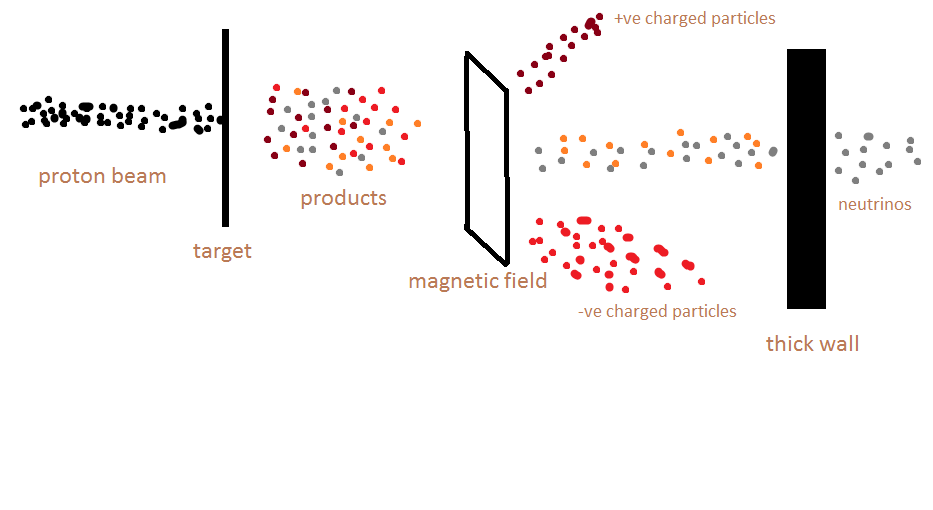The cosmic rays consist of all sorts of particles ranging from heavy protons to little to no mass neutrinos. There are trillions of trillions of neutrinos passing through the earth at any given time. While the proton, neutrons and other 'very social' particles get trapped by the many layers of the crust, these hermit neutrinos can stream through the matter unaffected (as a matter of fact, many light years of steel across). Neutrinos are extremely light and feebly interact with matter. We humans have already built detectors capable of detecting neutrinos despite the fact that the neutrinos are not social beings. Apart from catching the stray neutrinos in the cosmic rays, we have managed to detect neutrinos produced by smashing particles in accelerators.
$$$$
Building a Neutrino powered telephone
To build a communication system, you need three components:
- Transmitter - creating neutrinos
- Medium - neutrinos don't need a medium but they can travel through any medium
- Receiver - detecting neutrinos
Transmitter:
Producing neutrinos is relatively easier than detecting neutrinos. Smashing protons against a target will produce a beam of new particles. This is a very diverse beam of particles consisting of heavy and light, charged and uncharged (neutrons, protons, electrons, pions, neutrinos and what not). Some of these particles such as protons are unwanted particles which must be separated while some particles are useful such as pions which decay into muons and electrons producing neutrinos as side products.
$$\pi^+ \rightarrow \mu^+ + \nu_{\mu}$$
$$\pi^- \rightarrow \mu^- + \nu_{\mu}$$
The charged particles can be removed easily by surrounding the beam with a magnetic field. The charged particles will deflect in a curved path and hence can be separated. Neutrinos being uncharged are not affected by the magnetic field. The heavy particles can also be removed easily by using a thick steal-cement slab. Neutrinos feebly interact with matter and hence will easily make its way through the slab. Ultimately, you will be left with a beam consisting of neutrinos in majority.

Detector:
One of the detectors which is capable of detecting neutrinos today is the Super Kamiokande Neutrino Observatory. The detector is nearly a kilometer below the surface (so that particles which interact with matter get enough chance to do so). The test chamber is made up of steel and is in the shape of a cylinder. An array of super sensitive light detectors (photomultipliers) surround the sides of the test chamber. At the bottom of the test chamber, there are nearly 50,000 tons of water.
The theory behind the detector is that some of the neutrinos that pass through the water interact with matter and produce charged stray particles in the process which travel faster than the speed of light in water (speed of light in water is approximately around $0.75c$; physics works). This shows a phenomenon known as Cherenkov radiation which is similar to the sonic boom in sounds. This light is captured by the detectors and amplified to an extent which is measurable.
Conclusion:
Detecting neutrinos is very difficult and require big detectors. It isn't practical as of now to use neutrinos as a fast medium of communication. Of course, most of the neutrinos pass through the earth without interacting but it isn't a practically feasible method of communication as of today. Maybe some day in the future, we might actually build a working neutrino powered communication system.
There are lots of functioning neutrino detectors apart from
Kamiokande. You might be interested to read about "Ice Cube", an array
of downward-facing light detectors in the glacier over the South Pole
which detects neutrinos that have traveled through the Earth from the
northern celestial hemisphere. There are also working neutrino
detectors at Gran Sasso in Italy, and at the Soudan mine in the US,
which detect accelerator-produced neutrinos which travel through a
substantial thickness of Earth's crust.
Source: rob (visible in comments of this answer)

